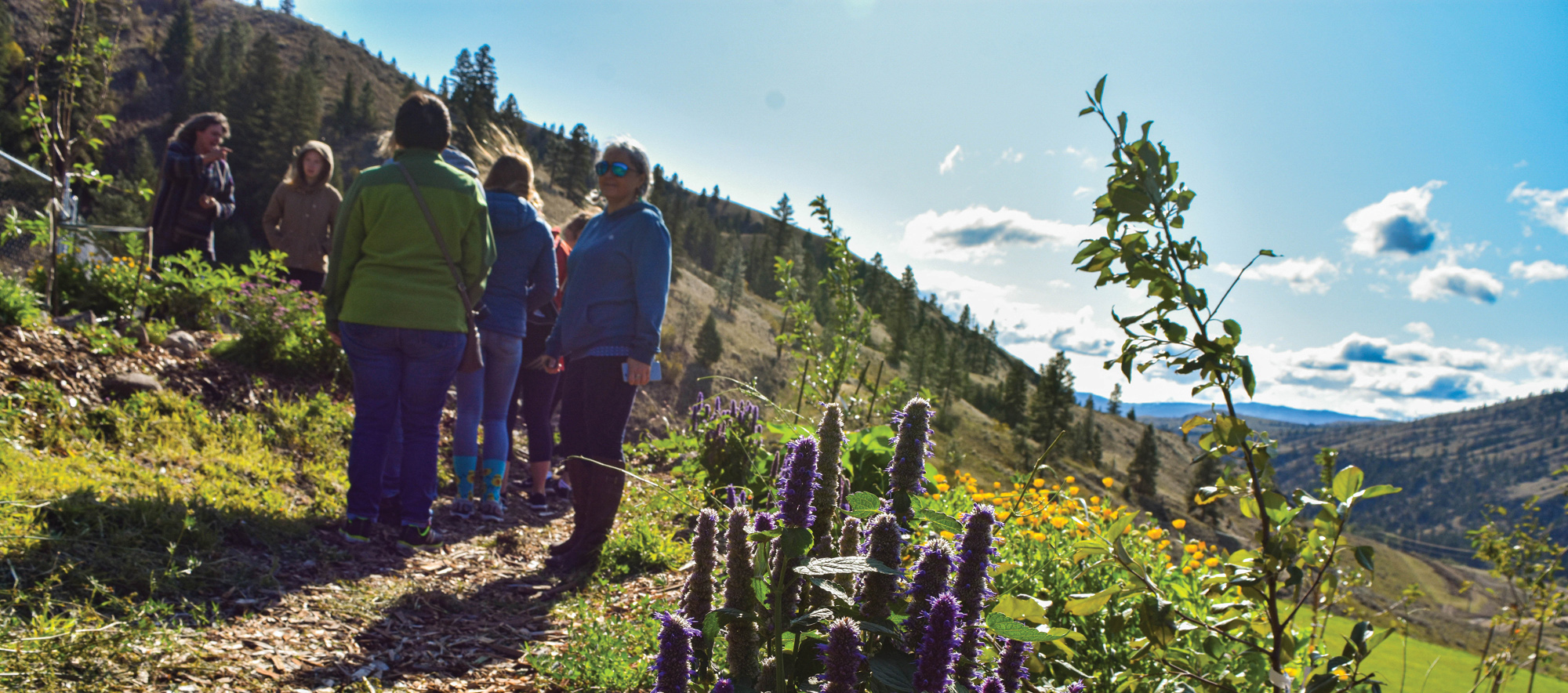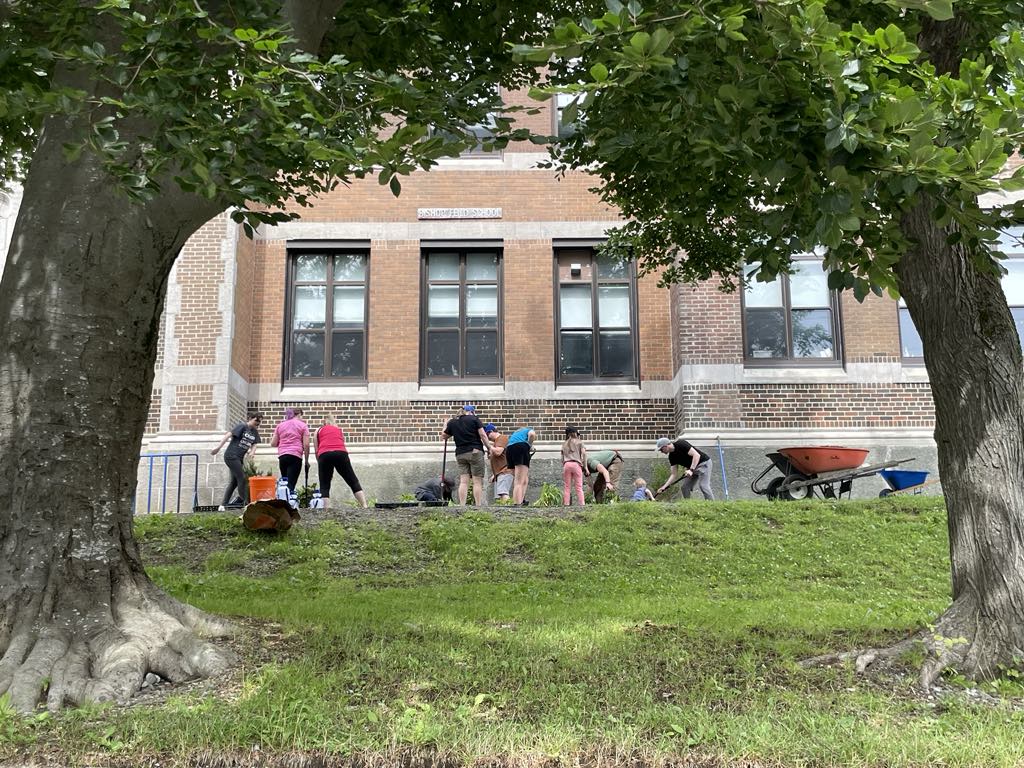In celebration of this year’s Farm to School Month, which is focusing on land-based learning, we wanted to dive into the benefits of food forests, and why schools and communities across the country are putting them in place.
In this CBC article, for instance, Port Elgin Regional School in Ontario highlighted how they “worked with nature versus against it” to turn empty land into an edible landscape. And they aren’t the only school to do so!
But first – what is a Food Forest?
Simply put, a food forest is a garden where vegetables, herbs and fruit trees are planted to mimic patterns in nature. They are perennial gardens, and thus tend to be very resilient.
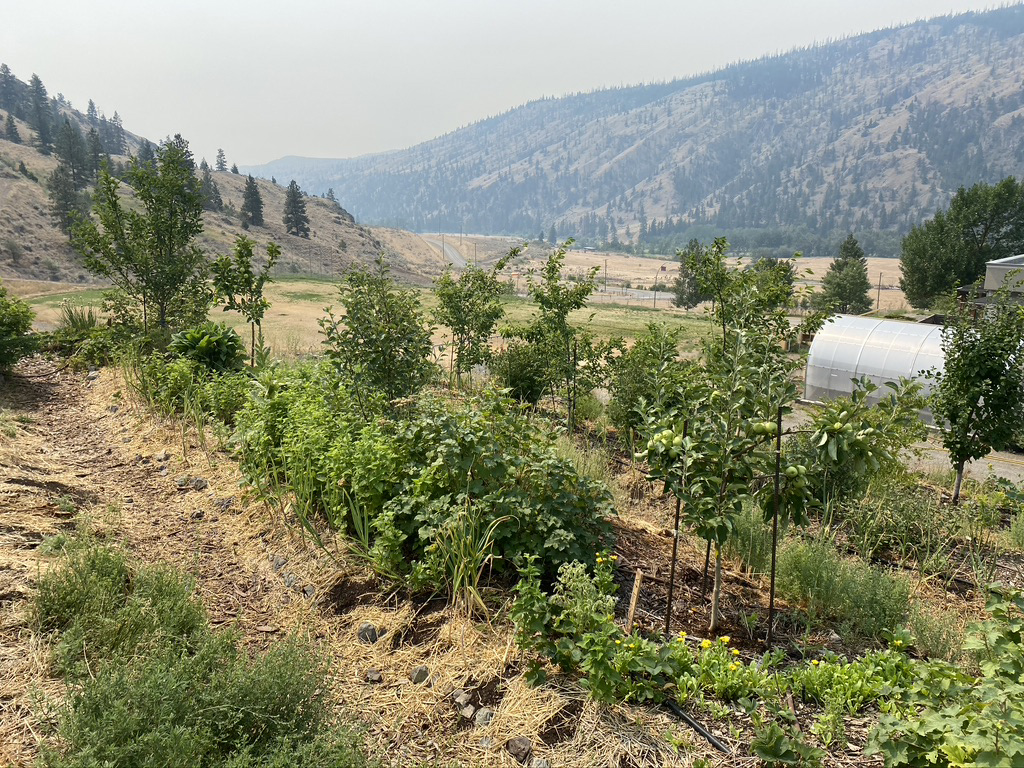
From Ontario to New Brunswick to Newfoundland and beyond, food forests are growing in popularity thanks to their potential to support the environment, food security efforts and climate resilience.
So it’s no surprise that food forests cultivate an abundance of educational opportunities too, particularly when using a land-based learning approach and drawing on Indigenous knowledge.
In fact, food forests in British Columbia have been found that were planted by Indigenous peoples more than 150 years ago; “The forest gardens were filled with plants that benefited humans, but they also continue to provide food for birds, bears, and insect pollinators, even after 150 years of neglect.”
In the same article, a historical ecologist goes on to say, “This shows humans have the ability to not just allow biodiversity to flourish, but to be a part of it.” The article then shares what we already know: “. . .that Indigenous knowledge has an important place in conservation efforts.”
One School’s Impressive Food Forest
Skeetchestn Community School, one of our grant recipients in a small rural community near Kamloops, BC, has a large food forest that is currently in its third season. The food forest was designed by Shelaigh Garson, a permaculture land designer who works with Indigenous schools in Kamloops as a School Garden Liaison. Shelaigh now maintains the food forest throughout the year (including the summer), and also teaches during the school year.
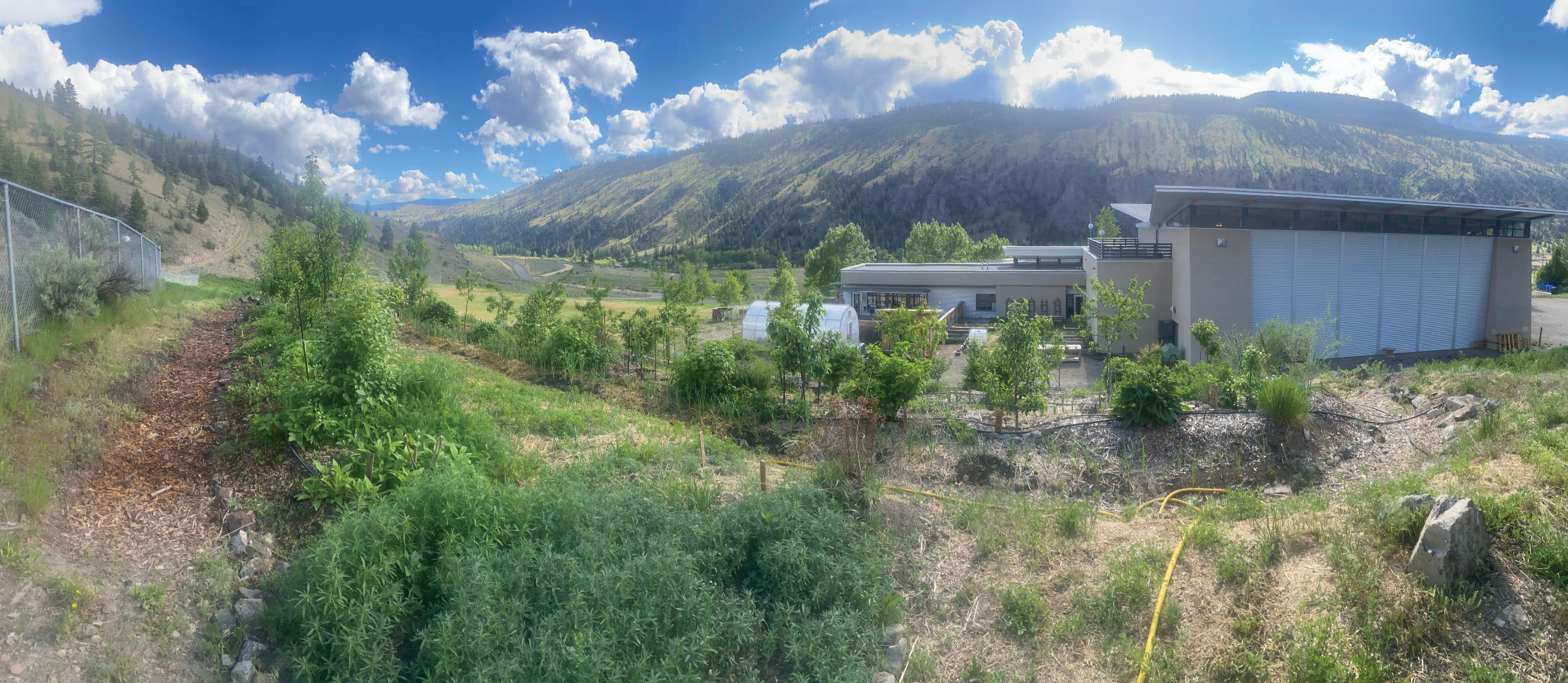
The school’s impressive food forest is layered with six large terraces, interconnected with a swale pathway that is mulched 2 feet deep with mixed arborist chips and bark mulch, which acts as a water harvesting system capturing snowmelt and rain. Each terrace or ‘berm’ is between 40 and 65 feet in length by 7-10 feet wide as they ascend the hillside. Like any food forest, thoughtful planning has gone into the structure to ensure success: each level is set up as a guild of plants, with various fruits trees and foundational plants that are underplanted with companion shrubs and perennials; there are pears, peaches, apricots, plums, cherries and apples that are underplanted with a variety of berry shrubs, native and culturally appropriate plants, herbs, medicines, pollinators and more; the garden beds/berms are mulched heavily with wood chips, manure and compost; the borders are planted with garlic each year, and the outer edges have plants that deter wildlife. All the plants are layered with purpose, attracting birds and pollinators alike.
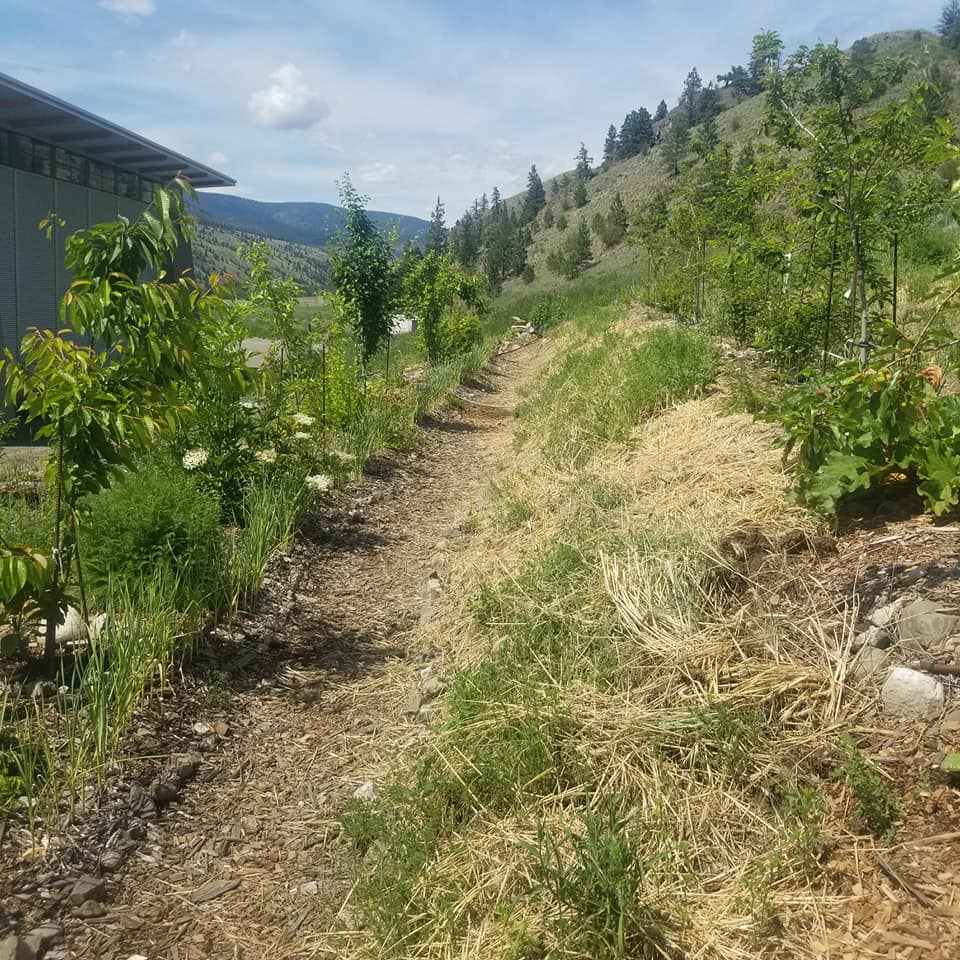
“The principle behind food forestry is mimicking nature,” Shelaigh explains. “Through this we see how everything is connected, functions are stacked from soil building and water harvesting to planting in guilds (or the ‘buddy system’ as we like to call it!) of species that support each other.” She adds, “a food forest is kind of like accelerating a natural system, imprinting human interaction to get things rolling faster. And gradually over time it maintains itself as a self-sufficient ecosystem.”
When Shelaigh brings students out into the food forest—whether for tours, harvesting, a science experiment, or just to see what’s growing—they are eager and excited to learn. It’s been a great way to engage kids in outdoor activities that are not only interesting and fun, but also related back to the curriculum.
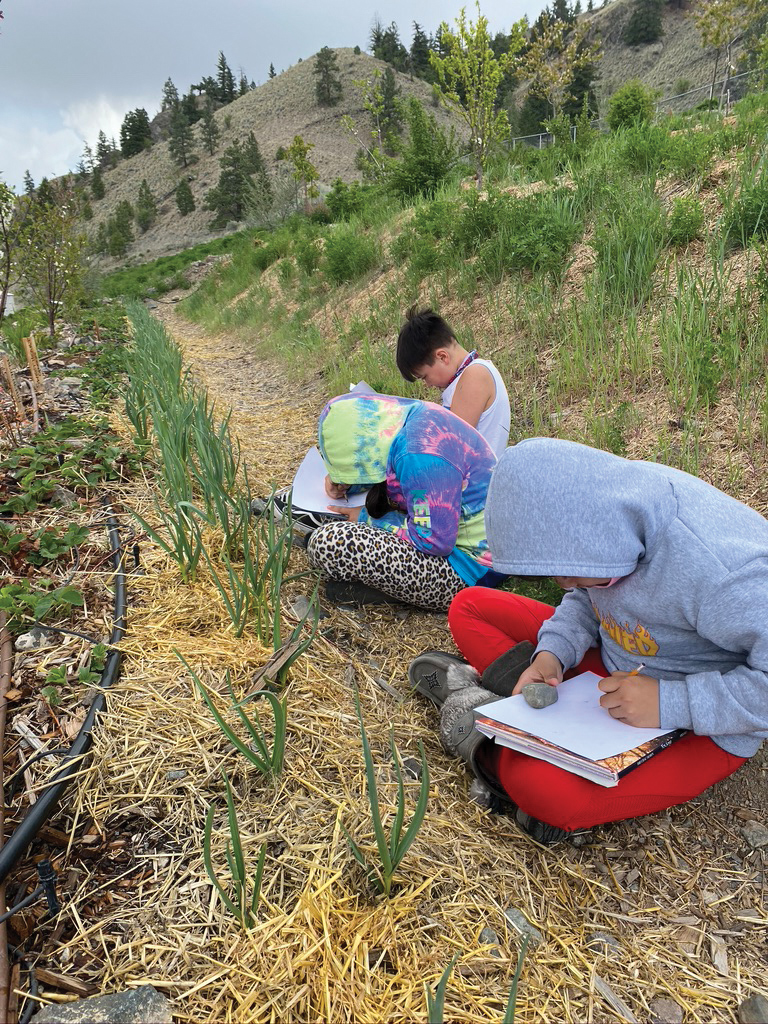
After all, the pandemic has underscored both the need and want for outdoor education spaces, and the complexity of the food forest has been the perfect classroom. Students are learning about everything from climate change and growing food to water harvesting, reusing energy and more.
The project has also been approved to receive funding for the installation of water cisterns and a large root cellar through the Investing in Canada Infrastructure Program. The school has plans to introduce animal husbandry to the food forest system as well, including chickens, ducks and small livestock.
“When we’re out there and it’s not structured, really interesting things happen,” Shelaigh says. “About 70% of the students here are Indigenous, so culturally they’ve been connected to the land, and I learn a lot from them too.”
The food forest has also helped to support the community through ongoing challenges brought on by the pandemic and wildfires. During lockdowns last year, the food forest helped fill Good Food Boxes that were sent to Elders in the community. The school has also been able to safely bring people together around the space during an isolating time, with annual events like their Garlic Festival and Festival of Lights.
But how did it all come about? Skeetchestn’s food forest grew out of connections from the Kamloops Food Policy Council, Qwemtsin Health Society and Farm to Cafeteria Canada (F2CC). These links led to the community receiving a Learning Circle Grant from F2CC in partnership with the Social Planning and Research Council of BC. The Learning Circle supported a meeting with Elders, teachers and Skeetchestn Indian Band members who wanted to address food insecurity and traditional food sovereignty in the area by introducing culturally-appropriate practices through food programs. Shelaigh brought forward the idea of food forestry and drew up a design using the principles of permaculture. The school and Skeetchestn Indian Band approved the plans, acquired support from a few additional funders, and the Natural Resources Department (the Band’s landkeepers) provided labour, machinery and soil. Public Works and Housing also offered ongoing support with irrigation, maintenance and a Tree Canada grant.
Community Collaboration around Traditional Knowledge
There are also great things growing out of community collaboration on the other side of the country.
Frank Skeard, a forester in Gander, Newfoundland and a member of the Qalipu First Nation Council, is excited about conversations in their community around sustainable food production, food forests, and preserving traditional knowledge.
“Seniors in our communities have an extensive amount of knowledge to share,” Frank says. “We need to incorporate their knowledge in everything we do before it’s lost. Traditional knowledge is what’s going to help us make a smaller footprint on the environment and become a more resilient population. The more you know, the more you can adapt.”
With support from the Qalipu First Nation Council, individuals and groups have been coming together to advance sustainability efforts. (Among these groups is a non-profit Frank and his daughter created, Kikmanaq.) These efforts include plans to establish a food forest on unused greenspace land within the next season or two, starting with the planting of some fruit trees.
“We’ve grown away from things like this, and we’re realizing we shouldn’t have, and we’re trying to re-learn that knowledge and capacity.” That’s why the community has been collaborating to build this knowledge, including through virtual sessions over the last year that discuss topics like edible plants, foraging, and how to harvest, grow and preserve. Frank says that some sessions have been blending Indigenous traditional knowledge with modern culinary skills and tricks in a really exciting way.
It’s all about shared values and a spirit of collaboration.
“Indigenous people live in harmony with the natural environment since time immemorial,” Frank says. “They understand how supporting natural succession can ensure a sustainable source of food for their community. They also understand that they need to balance consumption and regrowth of food forests.”
Interested to dig deeper?
You don’t need a large space to embrace the concept behind food forests.
In this CBC article, climate change consultant Jonas Roberts says you can even grow them in a pot. “It’s just having different layers and different plants that get along and support each other,” Roberts said. “. . . Just figure out what you want to do with the space you have and then try and use what nature has taught us, to try and make things grow and support themselves.”
Project Food Forest has plenty of great information.
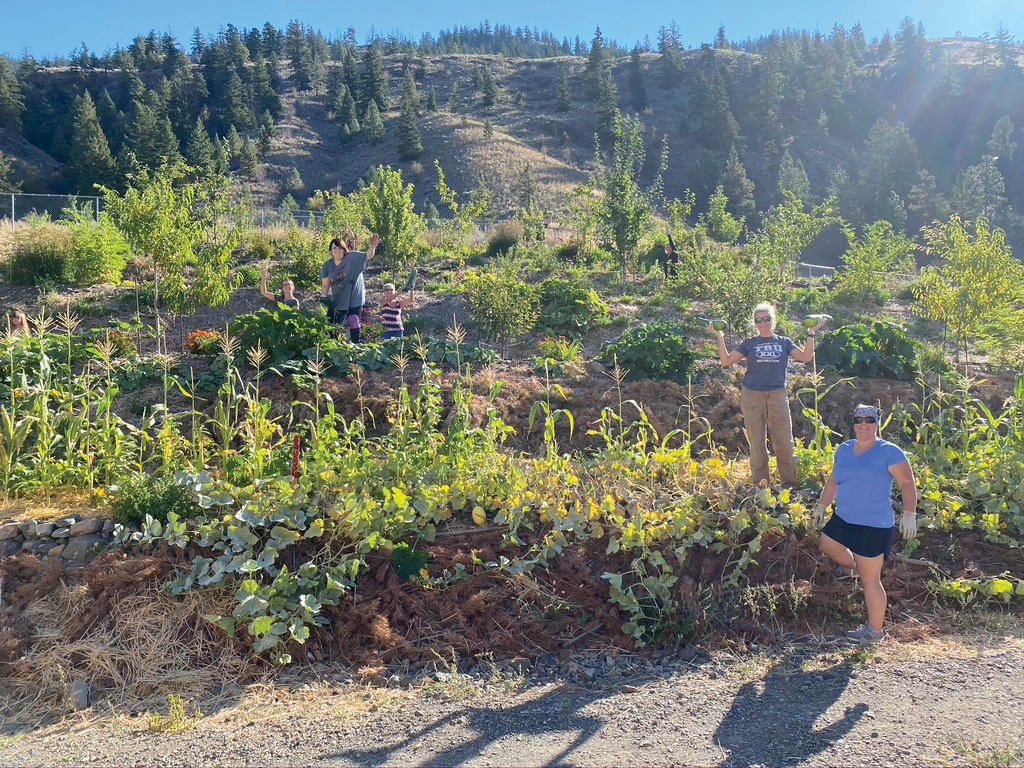
If you would like to take a deeper dive into food forests, this study out of Leuphana University Lüneburg analyzes the current state of food forests, while providing further understanding of their potential to advance sustainable food systems.
We’re excited by all the potential that food forests can bring to communities, and see so much potential for them to be integrated into schools as a part of the farm to school approach.


